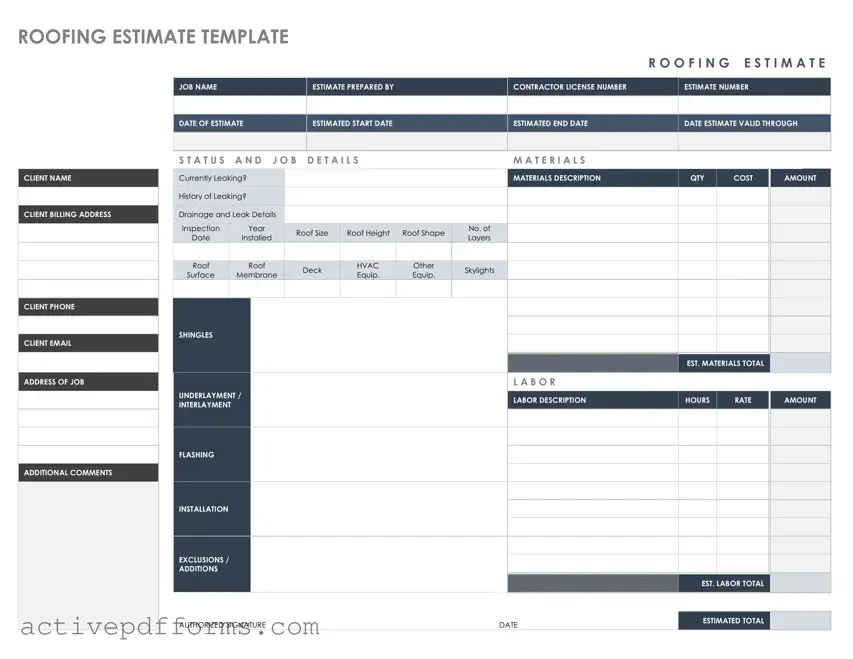Embarking on a roofing project, whether it involves repair, replacement, or installation, demands a well-informed approach for both homeowners and contractors alike. Central to this process is the Roofing Estimate Form, a critical document that serves as a cornerstone for project planning and financial management. This form not only outlines the scope of work in detail, including materials and labor but also provides a transparent overview of the costs involved. Its significance cannot be overstated, as it helps in setting realistic expectations, ensuring a mutual understanding between the contractor and the homeowner, and safeguarding against potential disputes. Furthermore, a thoroughly prepared estimate can aid in comparing bids from various contractors, ensuring that one makes an informed decision based not just on cost, but also on the quality of materials and workmanship. In essence, the Roofing Estimate Form is pivotal in promoting clarity, ensuring accuracy in project costing, and fostering trust, laying a solid foundation for a successful roofing project.

